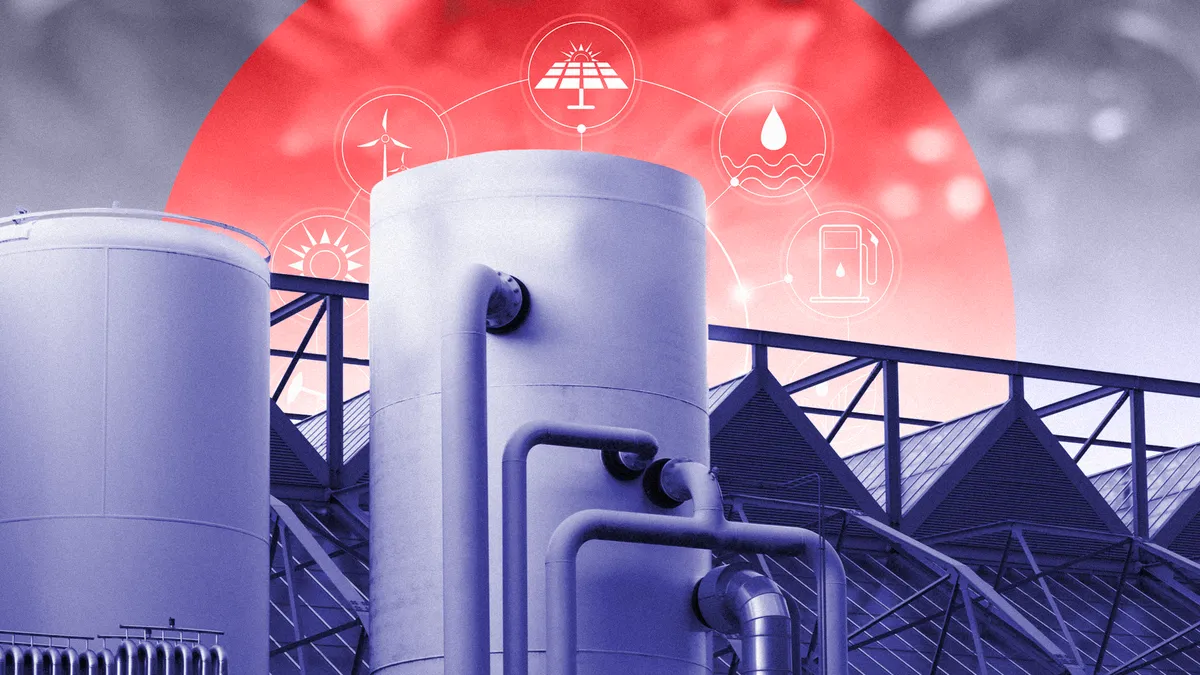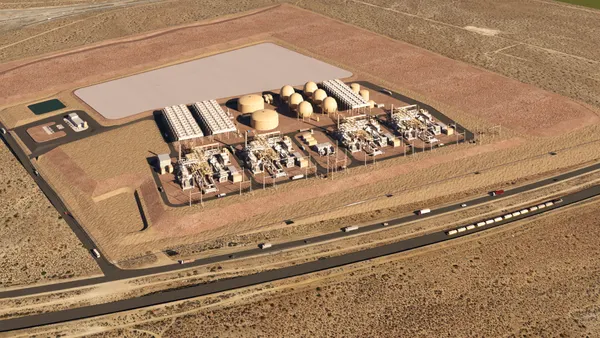Dive Brief:
- The levelized cost of 11 long-duration storage technologies in 2030 is expected to exceed the U.S. Department of Energy’s target of $0.05/kWh, necessitating further innovation, DOE’s Office of Electricity said in an Aug. 6 report.
- Implementing the most cost-effective innovation recommendations in the Long Duration Storage Shots Technology Strategy Assessments released by DOE last year could drop the levelized cost of pumped hydropower, compressed air storage and flow batteries below $0.05/kWh by 2030 while achieving dramatic cost reductions for lead-acid and sodium-ion batteries, the report said.
- The findings coincided with DOE’s Aug. 7 announcement of several initiatives to promote long-duration storage development, including a $100 million funding opportunity for stationary and non-lithium applications and a $75 million research facility at the Pacific Northwest National Laboratory campus in Richland, Washington.
Dive Insight:
DOE’s $0.05/kWh target comes from its Long Duration Storage Shot, which in September 2021 set a goal to reduce within the decade the cost of 10-hour-plus energy storage assets by 90% over the 2020 baseline for lithium-ion batteries.
The program is technology-agnostic, considering “electrochemical, mechanical, thermal, chemical carriers, or any combination that has the potential to meet the necessary duration and cost targets for grid flexibility,” according to DOE.
DOE’s Aug. 6 report examined levelized costs in 2030 for flow batteries, lead-acid batteries, lithium-ion batteries, sodium batteries, supercapacitors and zinc batteries (all electrochemical); below- and above-ground hydrogen storage (chemical); compressed air and pumped hydro (mechanical); and molten salt thermal storage (thermal).
The analysis compared the expected baseline 2030 cost for each technology against its potential levelized cost range after implementing the most cost-effective innovations specific to the technology, such as automating or scaling manufacturing, investing in demonstration projects and improving battery electrolytes or cell packaging.
The technologies’ expected 2030 baseline cost varied widely, from highs of $0.553/kWh for sodium batteries, $0.443/kWh for supercapacitors and $0.38/kWh for lead-acid batteries to $0.064/kWh for compressed air, $0.14/kWh for pumped hydro and $0.143/kWh for lithium-ion.
The potential cost reductions ranged from approximately $0.31/kWh each for sodium and lead-acid batteries to $0.027/kWh for molten salt thermal storage and $0.017/kWh for below-ground hydrogen.
In percentage terms, DOE found the greatest average potential cost reductions for pumped hydro (85%), lead-acid batteries (77%), flow batteries (66%) and compressed air storage (60%). Below-ground hydrogen storage (12%) and molten salt thermal storage (17%) had the smallest average potential cost reductions.
DOE also considered the potential cost and duration of innovation implementation to achieve the projected cost reductions. At 10.5 and 11 years, respectively, lithium-ion and sodium batteries had the longest implementation durations, while supercapacitors and zinc batteries had the shortest at 5.5 and 6 years, respectively. Supercapacitors and zinc batteries also had the lowest projected implementation costs, at $86 million and $155 million, respectively, though supercapacitors’ post-implementation cost of $0.337/kWh was the highest of any technology studied.
The picture that emerged from the analysis was one with “no clear technology winners when comparing tradeoffs between the cost, duration and impact of innovations,” said Office of Electricity Energy Storage Division Program Manager and Engineer Nyla Khan, the report’s lead author.
“This further emphasizes the value of advancing a diverse portfolio of storage technologies,” Khan said.
DOE used input from hundreds of subject-matter experts to understand the potential innovations, their suitability, investment timelines and impacts, Khan said. Additionally, the analysis assumed no marginal increase in industry investment over currently planned levels, and the post-innovation levelized costs were expressed in ranges to account for uncertainty, she added.
DOE’s Aug. 7 energy storage funding and innovation announcements could spur additional investment. The programs will support a “21st century electric grid” amid a rapidly changing generation mix, rising demand, and threats to grid infrastructure and reliability, DOE said.
The announcements included $100 million to support large-scale demonstration and deployment of non-lithium, stationary, and/or 10-hour-plus-duration energy storage projects; $8 million for up to four projects for design improvements to streamline manufacturing and reduce production costs; and up to $1 million in vouchers “to access analytical and capacity-building assistance from DOE labs and other experts,” DOE said.
DOE on Aug. 7 also announced the opening of Grid Storage Launchpad, a $75 million facility at Pacific Northwest National Laboratory to assist energy storage technologies at various stages of development.
Grid Storage Launchpad will help technology developers to screen promising active materials, test prototype cells and validate long-term operation of complete energy storage systems, said Office of Electricity Deputy Assistant Secretary for Energy Storage Eric Hsieh.
“For the first time, [Grid Storage Launchpad] integrates an atoms-to-systems pathway to help U.S. storage innovators get to market faster,” Hsieh said.














